blog
20th Anniversary Issue: Marina Font
As part of F-Stop Magazine’s 20th anniversary celebration we invited past featured photographers to share with us some thoughts and reflections. We asked each photographer to consider how their photographic work has changed over time, how the changes in photography over the past 20 years may have affected or influenced that change, and to share what they are up to most recently.
By Marina Font
http://www.marinafont.com/
I consider myself a photo-based artist. My work explores issues of identity: gender, memory, territory, place and origin, migration and belonging. Growing up in Argentina, my work is deeply Influenced by psychoanalysis and the forces of the unconscious. I tend to work in series. Each body of work takes a different visual approach according to the needs of the concept I am exploring and intend to portray.
My practice has been mainly studio-based. In earlier works, the photograph was a record of visual metaphors that I had constructed in the studio (Imprinted and The Weight of Things series); or the only testimony of a private performance that took place in the confinement and solitude of the studio space (El Contrato). Some images worked as single prints, others are a result of positioning together multiple images that become a piece.

Connected, 2009. From the El Contrato series C-prints 30 x 104 inches (30 x 20 inches each frame)
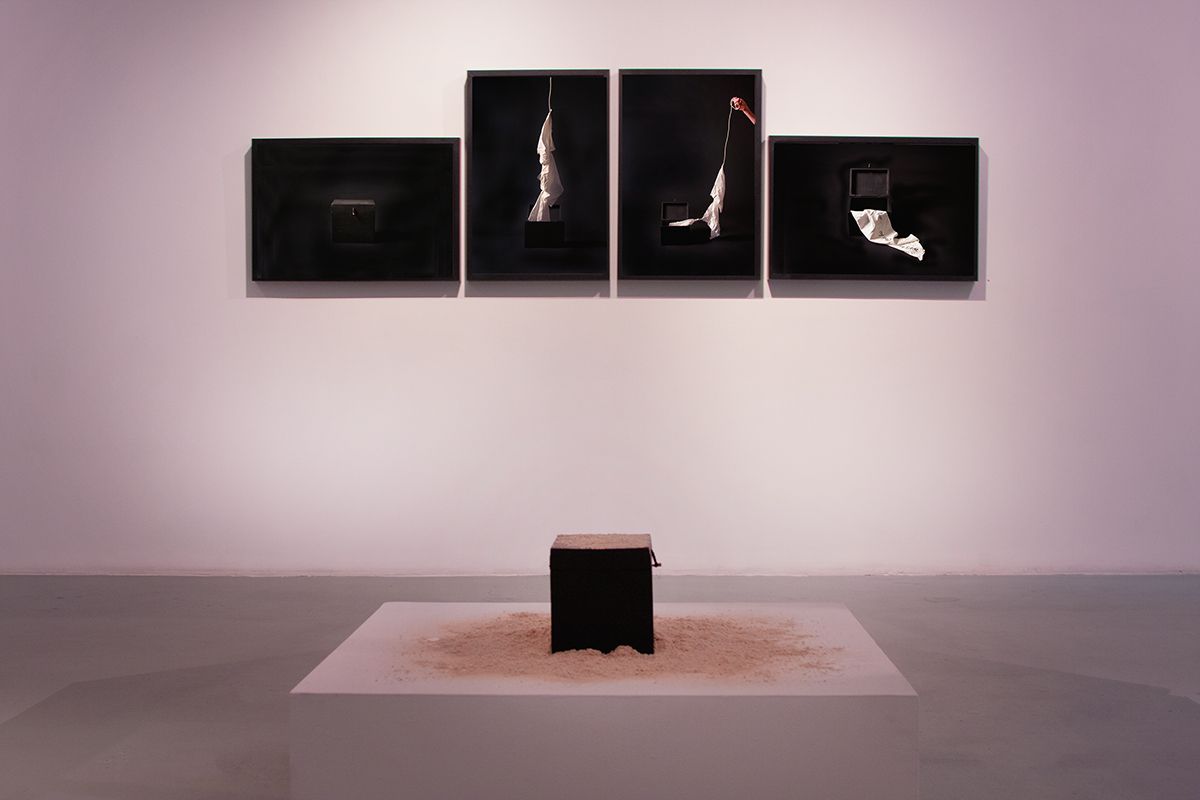
Pandora’s Box, 2009. From the El Contrato series C-prints 30 x 103 inches (30 x 20 inches each frame)
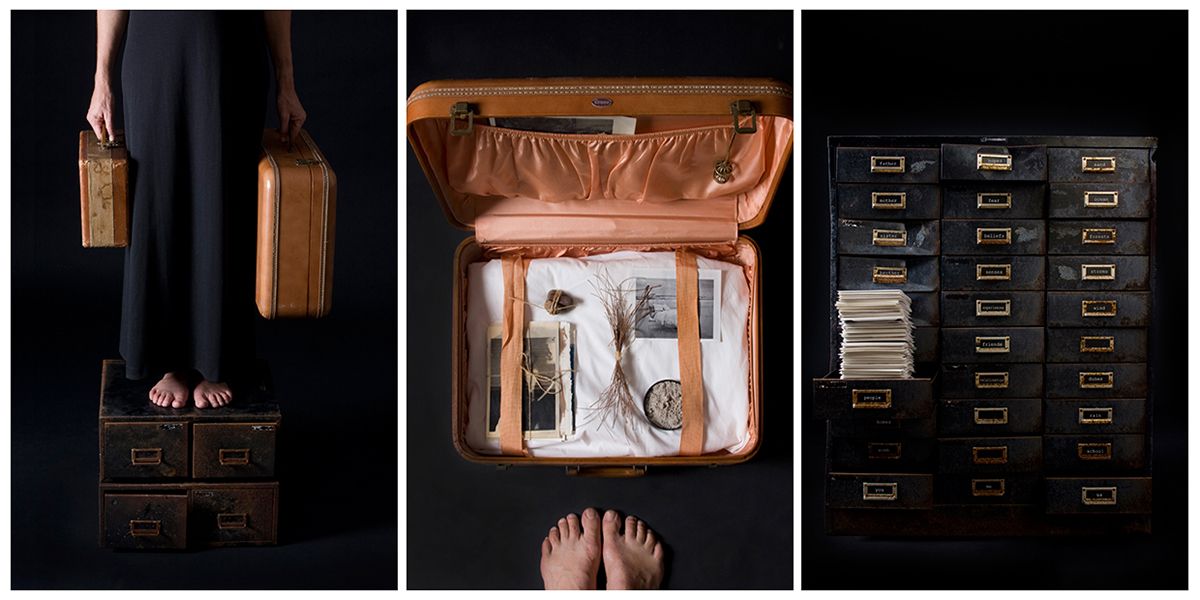
The Departure, Untitled and The House of Memory, 2011 Archival pigment prints on shadow box frames. 45 x 30 inches each
While working on the Imprinted series, which looked into the immigrant experience and the meaning of traditions, I made a photo-based installation that was pivotal in the way I approached photography. The Oneiric Memory was based on the concept of Quilting. For this piece I have created a photo-based quilt that gathers images representing memories of dreams and nightmares, questioning some traditions that are passed on from generation to generation. The photographs, manipulated and printed on canvas, were held together with surgical stitching and laid on an infant bed alongside a pillow embroidered with words of a lullaby sung to me by my grandmother.

The Oneiric Memory
By association of images and the incorporation of carefully chosen elements and materials that contributed to the concept of the piece, I was able to achieve a greater significance, one that surpassed the one of a single image. The work has evolved at its own pace, its own rhythm. It was by reconnecting with the tangible that I could arrive at a deeper connection and understanding of the work.
Losing interest in the photographic image as an end-result inevitably changed my way of working. From then on, the photograph became the “blank canvas” to be later worked upon, and where the work will materialize.
The next two bodies of work Dark Continents and Mental Maps began with a black and white image of a female body, printed over and over on canvas. In both series the image, or a portion of it, is intervened with paint, thread, and recovered textiles. It is through embroidery and the application of such textiles, historically associated with the feminine, that I intend to dissent with Freud’s vision on womanhood, and to open the dialogue between biology and psychology, the private and social persona, and the ever-evolving understanding of gender and self-realization in the twenty first century.
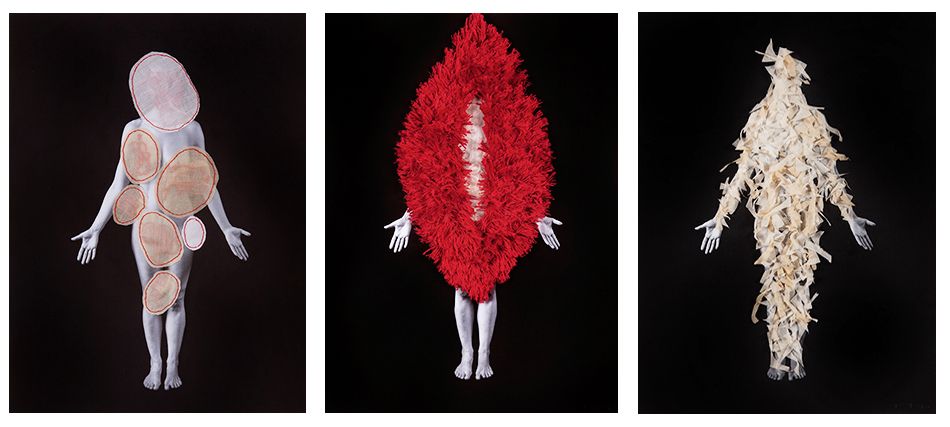
Ovals, V-Girl and Second Skin, 2014 Archival pigment prints on scanvas, gesso, fabrics and thread 45 x 30 inches each
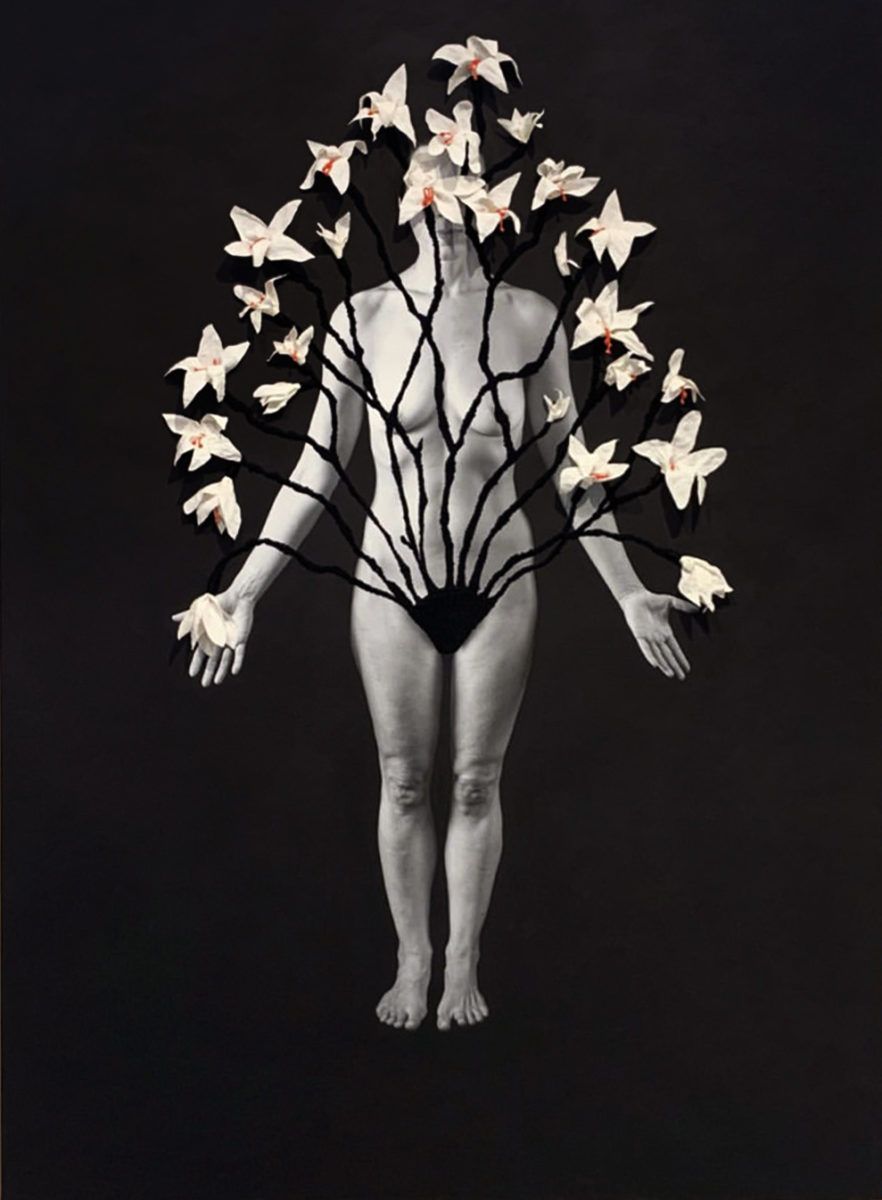
Re-birth, 2018 Archival pigment prints on canvas, gesso, fabric and thread 82 x 54 inches inches each
I have also worked in some pieces where the image is combined with other mediums and materials, such as ceramics and found objects, to create a larger photo-based installation, such as Light Has No Barriers, and Universe II.
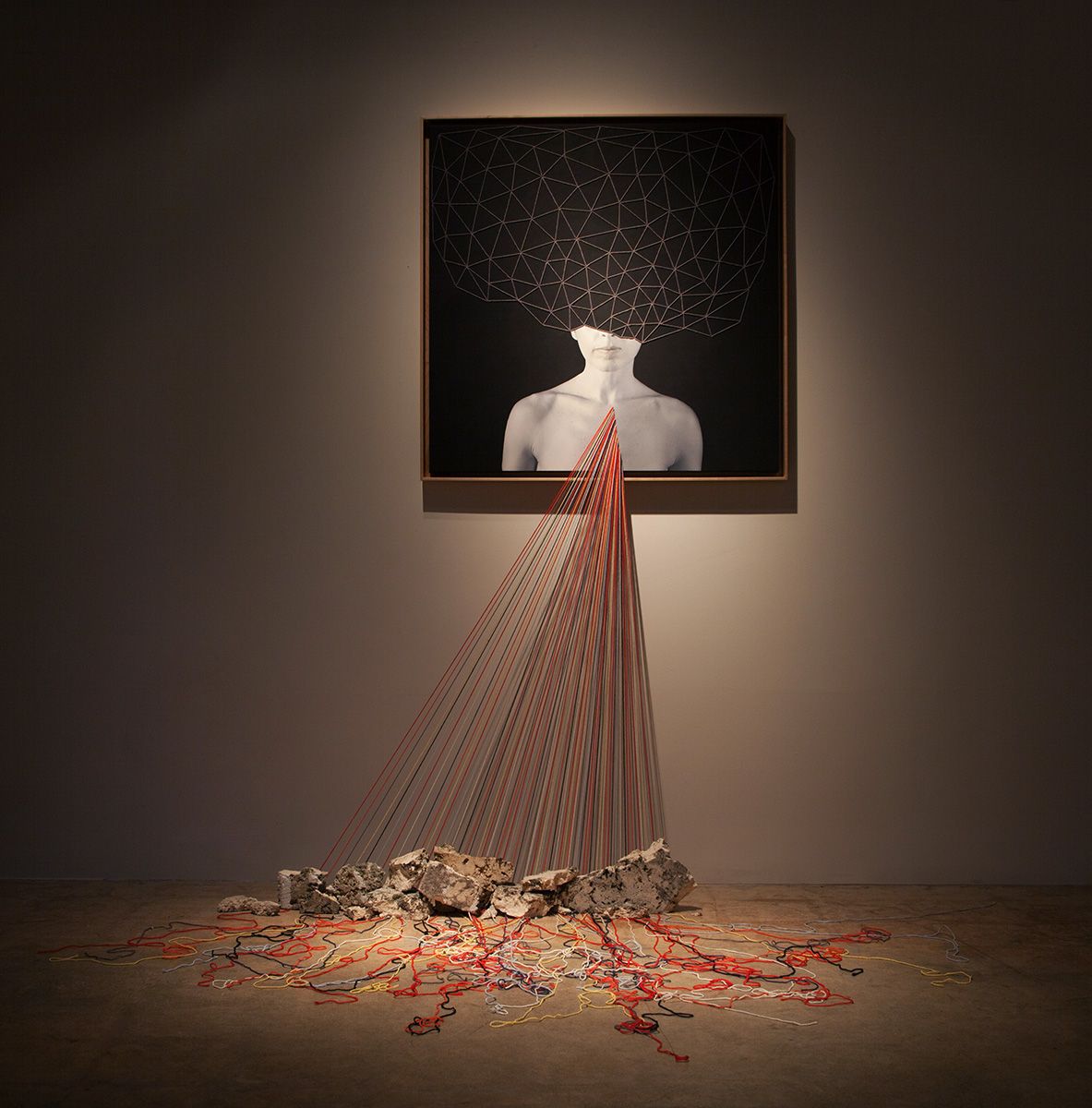
Light Has No Barriers, 2018 Archival pigment prints on canvas, gesso, cotton-hemp yarn and rocks. Dimensions variable (36 x 36 inches image)
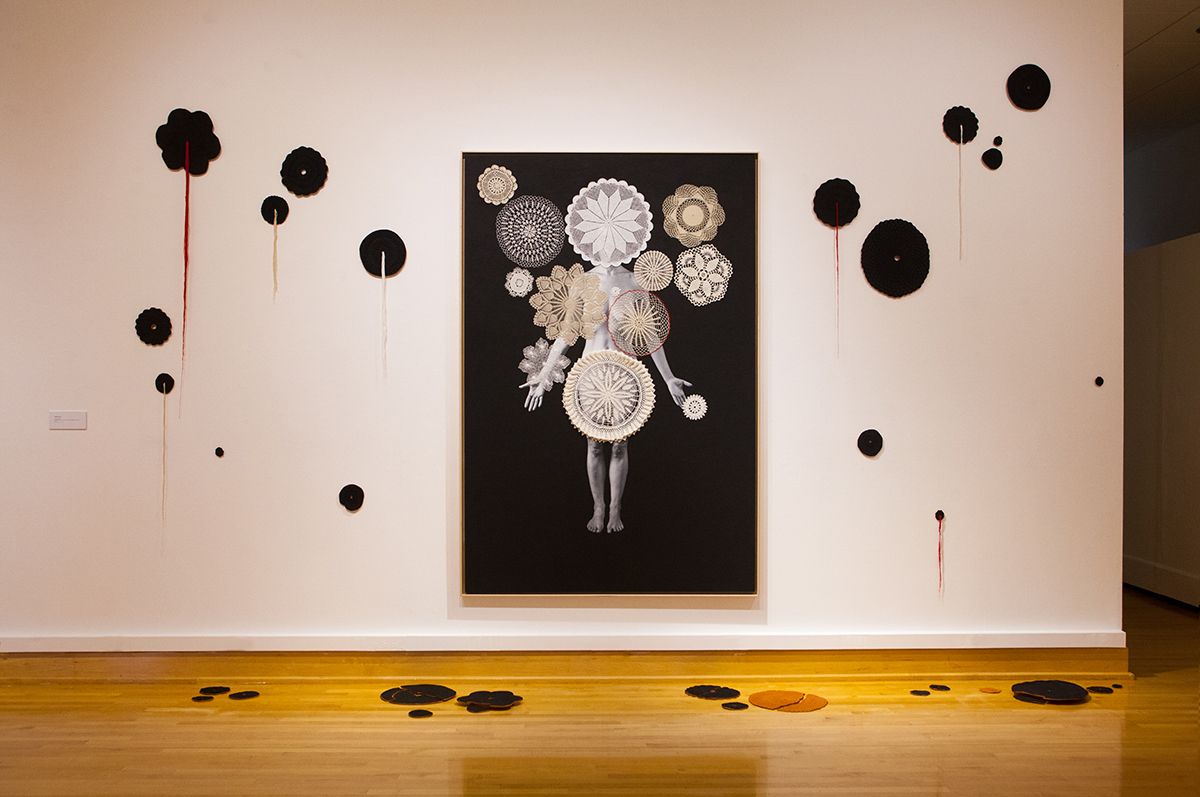
Universe II, 2020 Archival pigment prints on canvas, gesso, found textiles, ceramics and thread Dimensions variable (82 x 54 inches image)
During the pandemic I was drawn to work with the archive, re-surfacing images of family taken from an old family album inherited from my grandmother. The album pages had been salvaged and stripped of any narratives it had carried. As those stories eventually disappeared, and new technologies came up with the means of preserving memories, I reflected on the progressive shift of vernacular photography, questioning the future existence of the family album as an “object”, in its physical form. I deconstructed the album and categorized all the materials involved in its making: cotton paper album pages, photo-corners, glassine, thread, photo-folios, etc., utilizing them to intervene those images. What began as a study and reflection of the absence of memories turned into a series of unique compositional works on paper that build upon the open, indeterminate and ambiguous relationship between photography and the meaning of the photo album. The resulting works are focused on the physical materiality of the family album and evoke the deconstructed process of the making of the album itself: a handmade, long term construction of single edited narratives, revealing a past long gone, yet entirely present and future oriented.
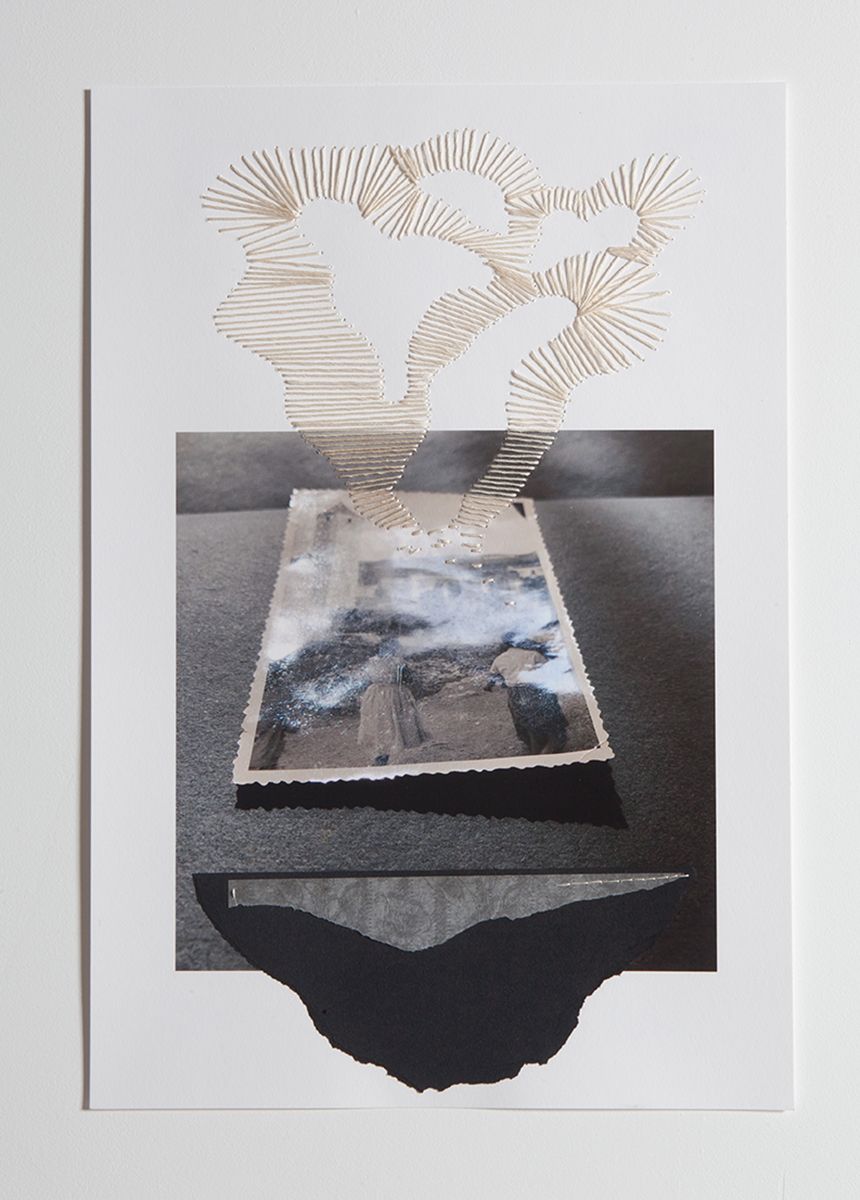
Untitled, 2021, From the Shifted Narratives series Archival pigment prints on cotton paper, recycled album pages, textured glassine and thread 19 x 13 inches
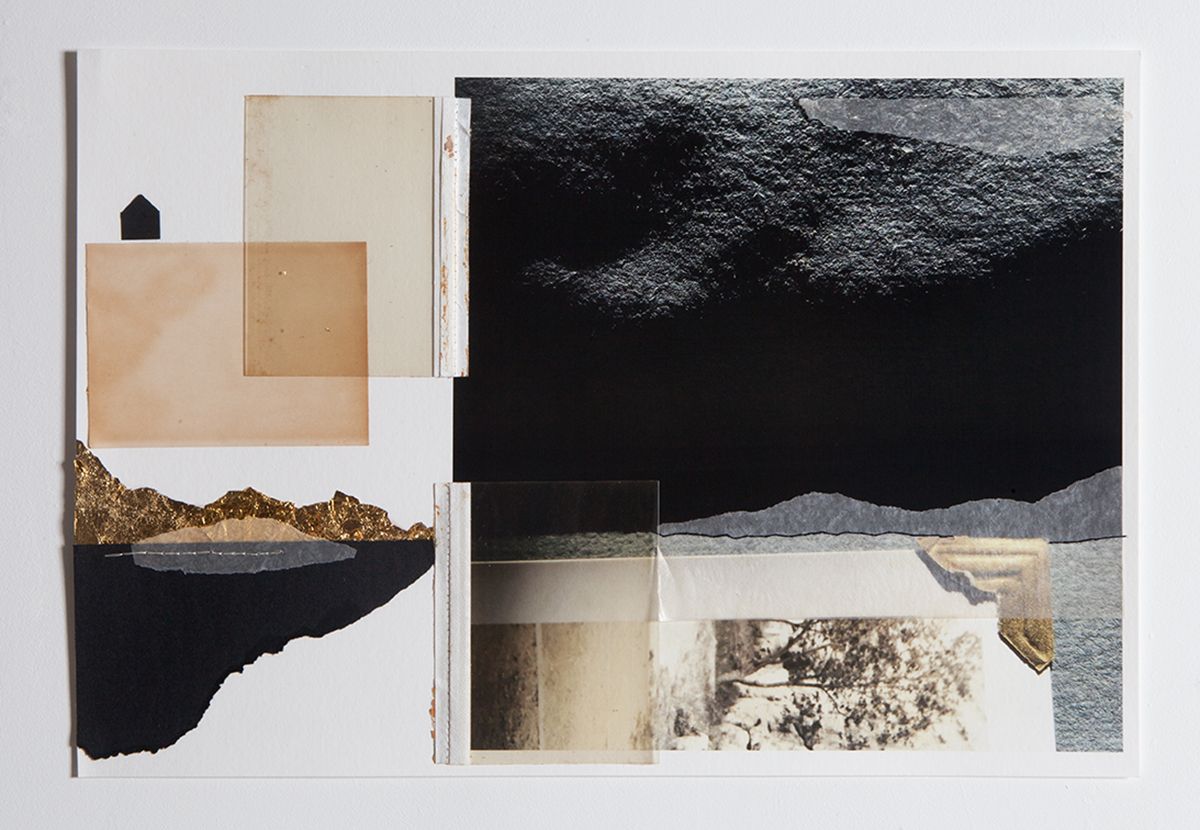
Untitled, 2021, From the Shifted Narratives series Archival pigment prints on cotton paper, recycled album pages, textured glassine and thread 19 x 13 inches
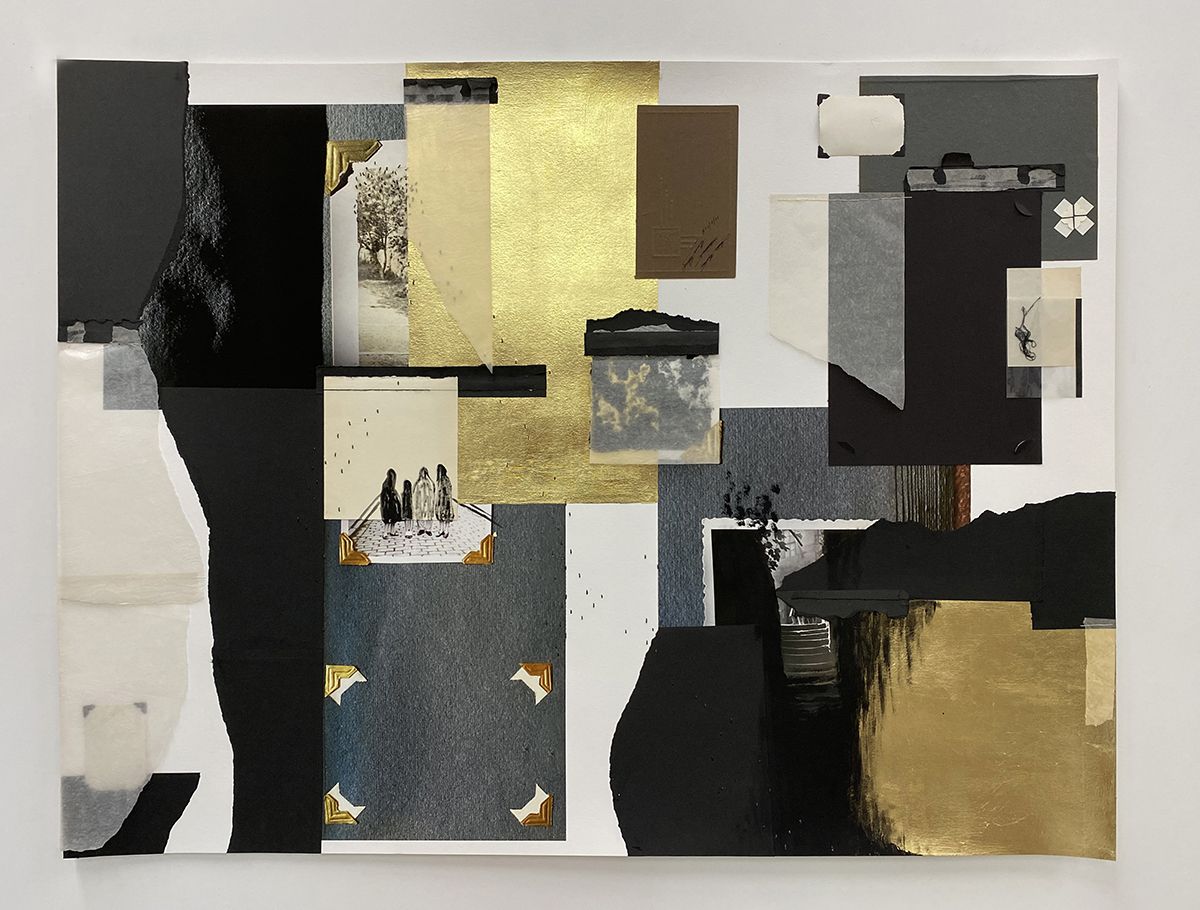
Untitled, 2021, From the Shifted Narratives series Archival pigment prints on cotton paper, recycled album pages, photo folios, gold leaf, vintage photographs, textured glassine, gesso and thread 36 x 47 inches
In that search for my past, origin and belonging, I started photographing the landscape of my youth. Growing up in a coastal town in Argentina, constantly moving from house to house, memories of my childhood home are closely related to nature rather than to a particular space. It was by the ocean where I could find refuge and a true feeling of peace. Disinterested in the photographic landscape as a conclusion, these works explore how to transmute the retinal experience of capturing nature, re-interpreting it so that it is connected to the human experience.
For the Adopted Landscapes series, I intervene each image in several instances, first digitally and then manually, with colored shapes and tracing paper that is only attached to the print by thread, as on the thread of memory. The added layers of planes and volumes resemble architectural shapes and blueprints, real and imaginary, of the multiple homes I have inhabited. Those shapes not only embrace the physicality of the landscape, but also the emotions they evoke, helping us define how we understand our place in the world and our sense of belonging. These compositional works evolve from photographs of the landscape that in some ways have adopted me back in Argentina, to images of the landscape of my current adopted city: Miami.
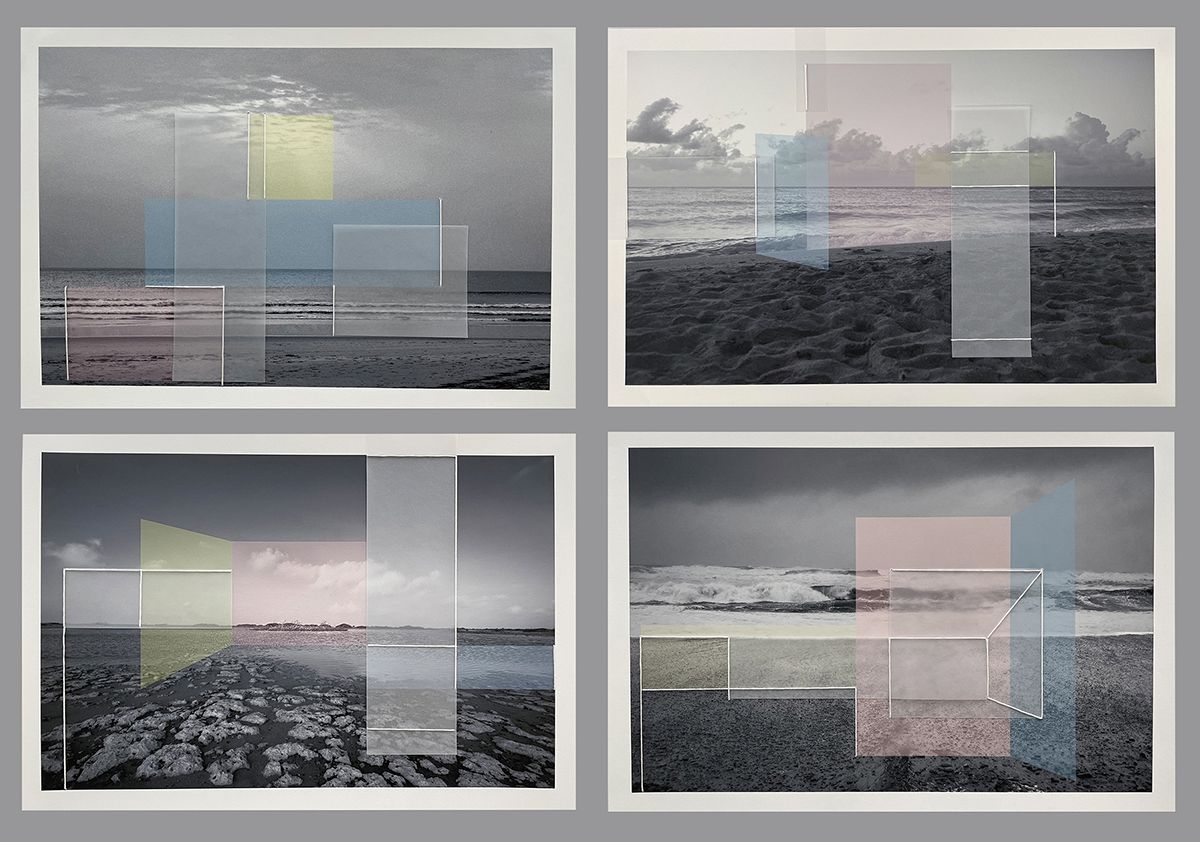
Untitled, 2022, From the Adopted Landscapes series Archival pigment prints on cotton paper, tracing paper and thread 36 x 47 inches each
This series emerged as research on the longing of home and is now expanding towards the interconnectedness between these vast spaces. By tracing these imaginary habitats, and re-mapping the outer-world, I aim to expand the notion of belonging and shelter, attempting to erase the concept of borders and divisions between territories, resting on the resolve that nature is, in fact, our real home.
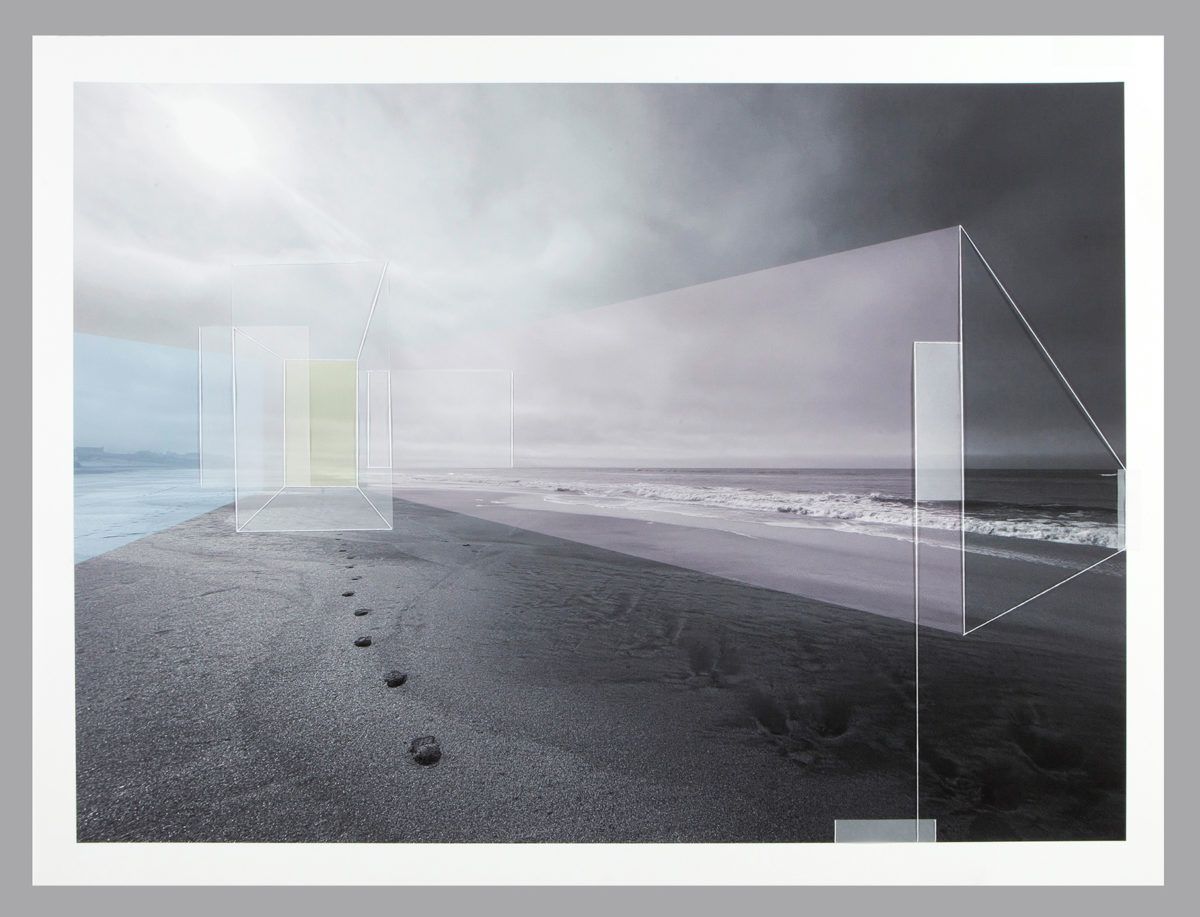
Untitled, 2022, From the Adopted Landscapes series Archival pigment prints on cotton paper, tracing paper and thread 36 x 47 inches each
This way of working has allowed each piece to transcend the meaning of the image. It is through the process of intervention and materialization on the photograph’s surface that each work becomes unique, creating a visual construct that leads the viewer to consider larger issues.
Events by Location
Post Categories
Tags
- Abstract
- Alternative process
- Architecture
- Artist Talk
- artistic residency
- Biennial
- Black and White
- Book Fair
- Car culture
- Charity
- Childhood
- Children
- Cities
- Collaboration
- Community
- Cyanotype
- Documentary
- Environment
- Event
- Exhibition
- Faith
- Family
- Fashion
- Festival
- Film Review
- Food
- Friendship
- FStop20th
- Gender
- Gun Culture
- Habitat
- Hom
- home
- journal
- Landscapes
- Lecture
- Love
- Masculinity
- Mental Health
- Migration
- Museums
- Music
- Nature
- Night
- nuclear
- p
- photographic residency
- Photomontage
- Plants
- Podcast
- Portraits
- Prairies
- Religion
- River
- Still Life
- Street Photography
- Tourism
- UFO
- Water
- Zine

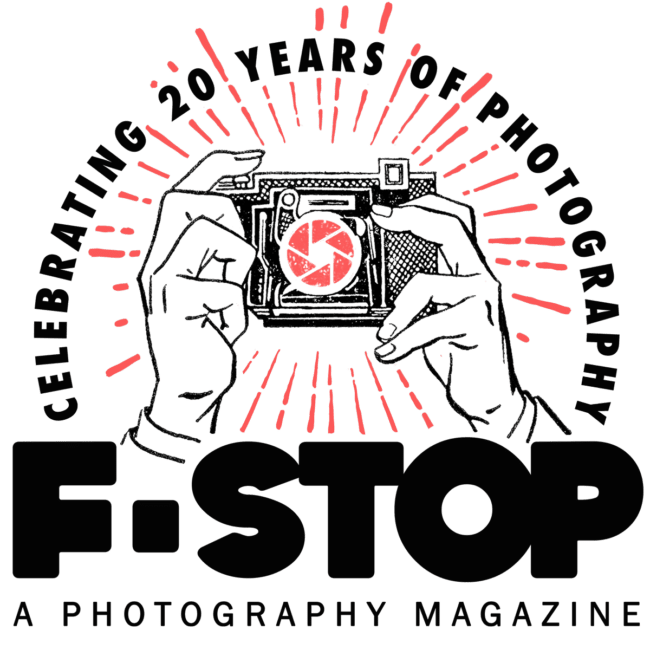
Leave a Reply